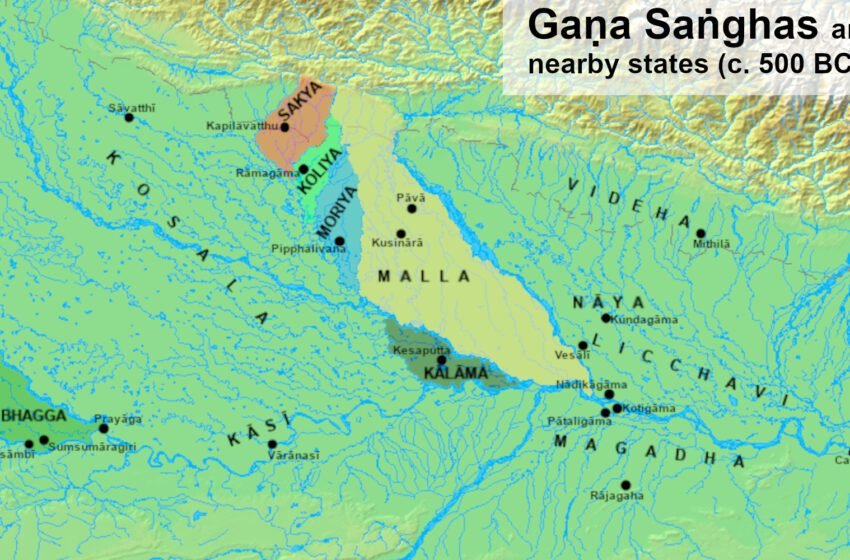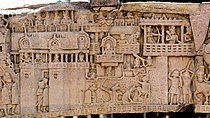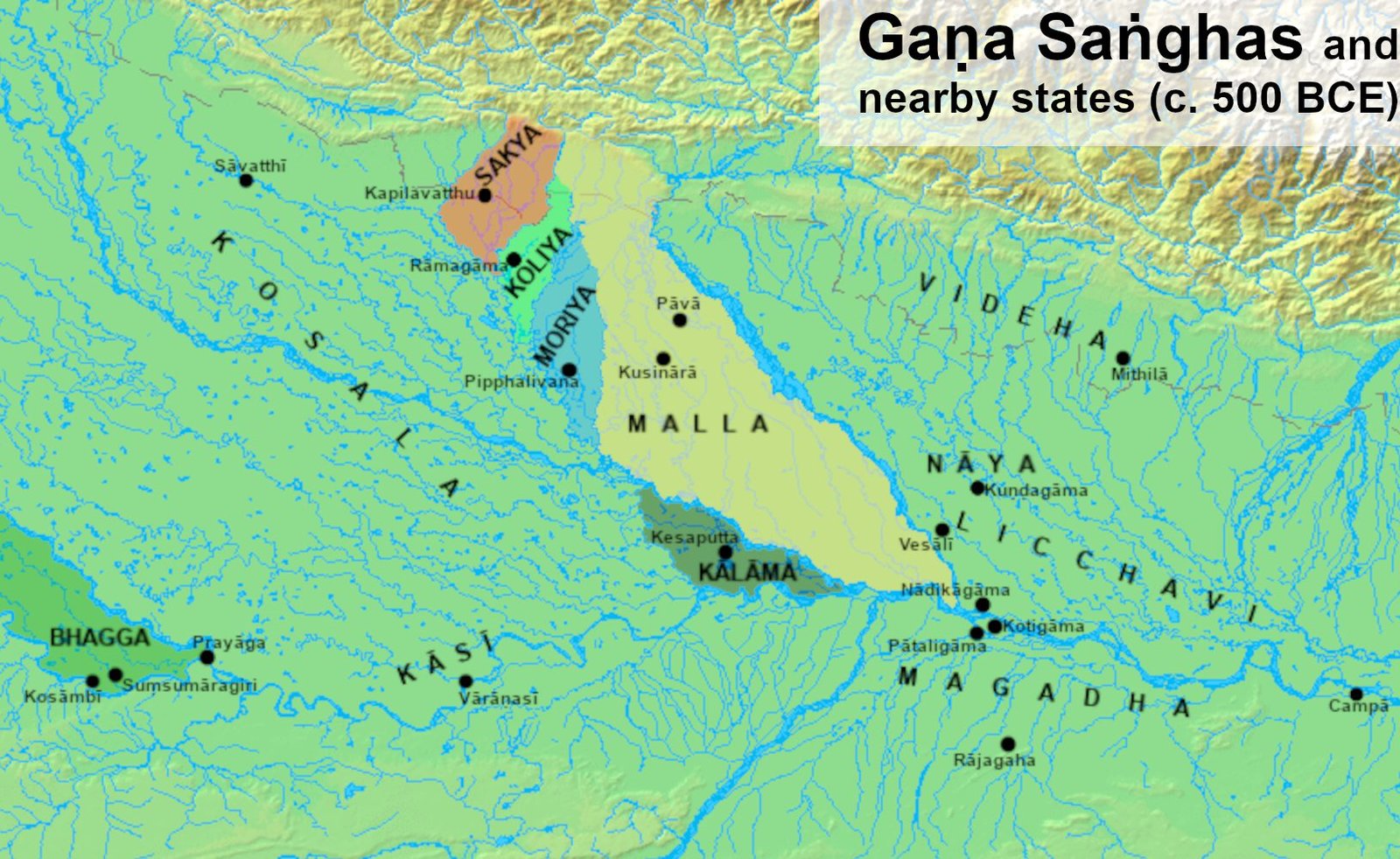MahaJanpada : Malla the ancient Mallarashtra

Over the years people who migrated from Central Asia to the northern Indian subcontinent (which mainly consists of modern day Bangladesh, Bhutan, India, Nepal, Pakistan, and Sri Lanka) are collectively called and recognised as Indo-Aryan people. The migrations started around 1,800 BCE which was basically after the invention of the war chariot. It is pertinent to mention here that all these were happening towards the middle to the end of Vedic period. During the end of the vedic period and with the emergence of the Indo-Aryan people in India, a new civilisation started which is known as tribes. These civilisations were united by shared cultural norms and language. These people who formed tribes were not exactly the way we assume tribes to be but also not completely different. When they arrived and settled in India in the early vedic periods or middle vedic period, they partially lived in forested land along with their families and cultures.
According to research papers during this period the Indo-Aryans apart from getting adjusted to their surroundings also happened to preserve collections of religious and literary works by memorising and reciting them, and handing them down from one generation to the next in their sacred language, which is Sanskrit. The Indo-Aryans did not have much wealth and thus they had to heavily depend upon stuff like pastoral, and had to live with a semi-nomadic economy along with limited agriculture. They tried raising sheep, goats, and cattle, which later became the symbols of wealth for their civilization. The Indo-Aryans also started cultivating wheat, rice and barley and tried implementing new crafts, such as carpentry, leather work, tanning, pottery, jewellery crafting, textile dying, and wine making. They were mainly organised as tribes and hence they often had a clash with other tribes of the same civilisation, in the terms of food, land and resources.

Over the years they developed their civilisation and by the end of the Vedic period they had transitioned from nomadic civilisation to a settled agricultural civilisation which soon took the shape for a geo-political society. The society which took shape around the middle of the sixth century was known as Janapadas. The janapadas which were formed, had features like well-defined boundaries, headquarters and other political organisations and facilities which enhanced the kinship of the civilisations and shifted them from rural to an almost urban society. These janapadas with time grew more and more and expanded their boundaries and soon turned into Mahajanapadas with more than one settlement. The mahajanapadas which were formed also had the above mentioned features and along with it also had well-defined caste systems, economic obligations and also social disabilities. As mentioned in the ancient books and Pali texts there were in total 16 Mahajanapadas, which were in the order of : Anga, Magadha, Kasi, Kosala, Vajji, Malla, Ceti, Vamsa, Kuru, Pancala, Maccha, Surasena, Assaka, Avanti, Gandhara, Kamboja, among which the first fourteen are included in the Majjhimadesa, and the last two being in Uttarapatha. One of the most important and famous mahajanapada was Malla.

It was basically first an ancient kingdom, which was later part of and considered as one of the sixteen Mahajanapadas. It was named after the Malla ruling dynasty. Malla is situated to the north of Magadha Mahajanapada, and is mentioned in the Mahabharata as Mallarashtra. It was a small Mahajanapada but its strength and power should not be underestimated. The republican mahajanapada of the Mallas was located in the Gorakhpur district of Uttar Pradesh, and covered the territory between the Licchavis of Vesali and that of the Sakyas of Kapilavatthu, the Moriyas, and the Koliyas, to the east of the Kosalas.
According to ancient books, during the Buddhaís time, this mahajanapada appears to have been divided into autonomous parts with their respective capitals at Pava and Kusinara, where each of them had their own santhagara (motehall). It has been heard that after the death of the Buddha at Kusinara, the Mallas of Pava had claimed a share of the Buddhaís relics, which apparently might have led to some conflicts within the communities. Kusinara has been identified with Kasia, and Pava may be located in the Jharmatiya-Usmanpur sector rather than at Padrauna. According to history, the Buddha took his last meal at Pava and breathed his last at Kusinara. Pava was actually the scene of Nigantha Nataputtaís death. The Mallas, both of Pava and Kusinara, eventually decided to erect stupas over their respective shares of the relics of the Buddha. It has been told that the Malla chiefs have administered the affairs of their state in turns unlike others. The two territories of Malla were divided by the river Hirannavati in Pali.
It used to be a powerful tribe at the time of Buddha, in Mahabharata, along with Angas, Vanga, and Kalinga, the Mallas were also mentioned, their dominance was made up of nine regions.
Kushinagar is famous for the chosen death place of Buddha, after the death of Buddha wanted to keep his relics but later it was divided among 8 royal families and his disciples, and King Ashoka installed these relics in 84,000 stupas.

The relation of the Licchavikas with the Magadha empire was initially good but soon declined which is one of the main reasons why Mallas had a downfall, as because Mallas too were a part of the Licchavikas tribe. Apart from occasional tensions there was not any huge conflict between Licchavis and the Magadhas. Among all the conflicts two issues took a great shape among which one the competition at the Mallaka capital of Kusinara over acquiring the relics of the Buddha after his death. The other one was this that the Licchavikas once invaded Magadhi territory from across the Ganga which resulted in grave grievances, and at some point the relations between Magadha and Licchavi permanently deteriorated as result of the offence committed by the Licchavikas towards the Magadhi king Bimbisara.
The tensions between Licchavikas and Magadhas kept rising under the rule of Ajatashattu who was Bimbisara’s son. The Mallas were important members of the Vajjika League and thus was also threatened by Ajatashattu’s attack. The strenght and military power of the Vajjika League was too strong for Ajatashattu to defeat them and thus he sought to diplomacy and intrigues over a significant span of time and defeated the Vajjika league by 468 BCE and annexed all its territories which included the Malla. The Mallas was initially given a limited amount of autonomy in terms of internal matters but they were stopped from existing as a republican tribe and eventually got dissolved.
Mallas were also mentioned as Vratya Kshatriyas, and were followers of Jainism and Buddhism. They were very brave and war-loving people. During the time of the Buddha, he made an alliance with the Lichchavi for their self-defense, but after the death of the Buddha, they lost their independence and the Malla kingdom was annexed to Magadha in this way.


